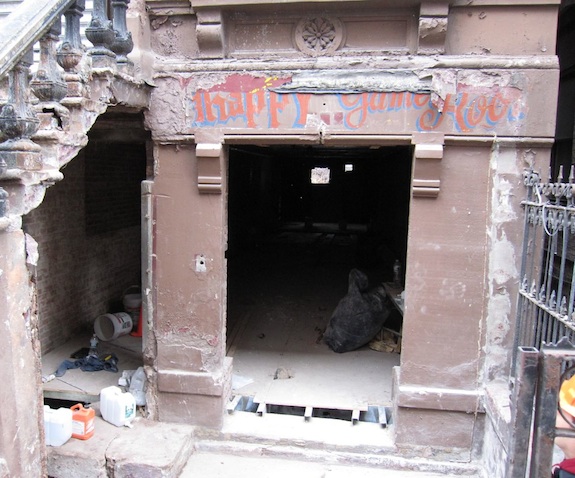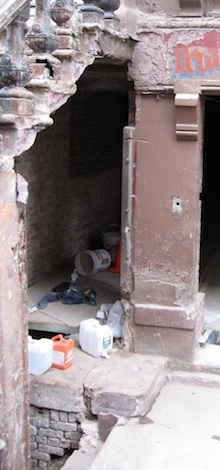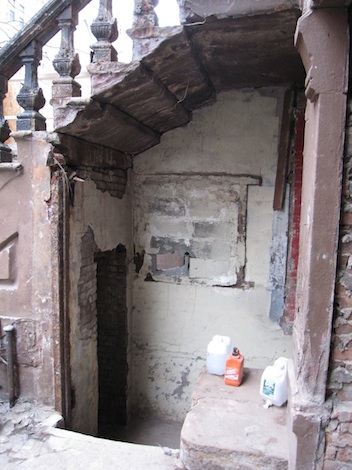Our place is shrouded with black netting that covers the scaffolding they’re using to work on the front façade. As a result it’s hard to see their progress, but they’re finally down to the parlor level on one side, so you can see their restoration work as you go in the building…
There are these rosettes on each side of the windows… Here’s one on the top floor that’s still in great condition…
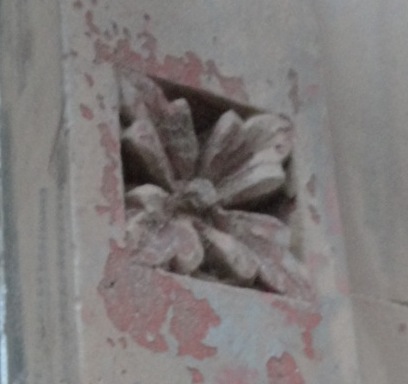 The mason has taken a mould of one of the good ones and is using the mould to restore the ones that aren’t in good shape… Here’s one around the parlor window that’s in progress…
The mason has taken a mould of one of the good ones and is using the mould to restore the ones that aren’t in good shape… Here’s one around the parlor window that’s in progress…
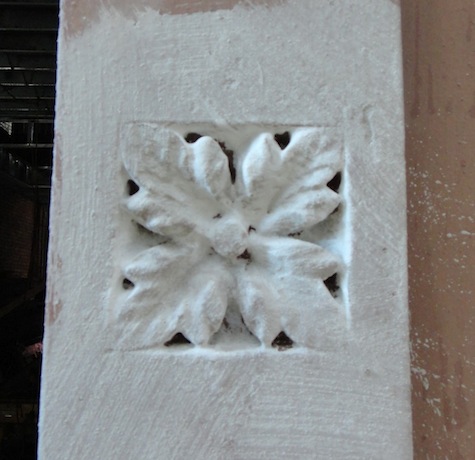 There’s also a detail over the front of the big parlor window that was missing on our place and is missing on many of our sister townhouses, but is still there on one of them – it’s a subtle crown moulding-like detail in a corner just above the window. The foreman noticed the detail on the neighboring house and is having the mason reinstate it on our place. They seem to be having fun with the restoration… Which is good…
There’s also a detail over the front of the big parlor window that was missing on our place and is missing on many of our sister townhouses, but is still there on one of them – it’s a subtle crown moulding-like detail in a corner just above the window. The foreman noticed the detail on the neighboring house and is having the mason reinstate it on our place. They seem to be having fun with the restoration… Which is good…
Here you see them working on the sill for the parlor window…
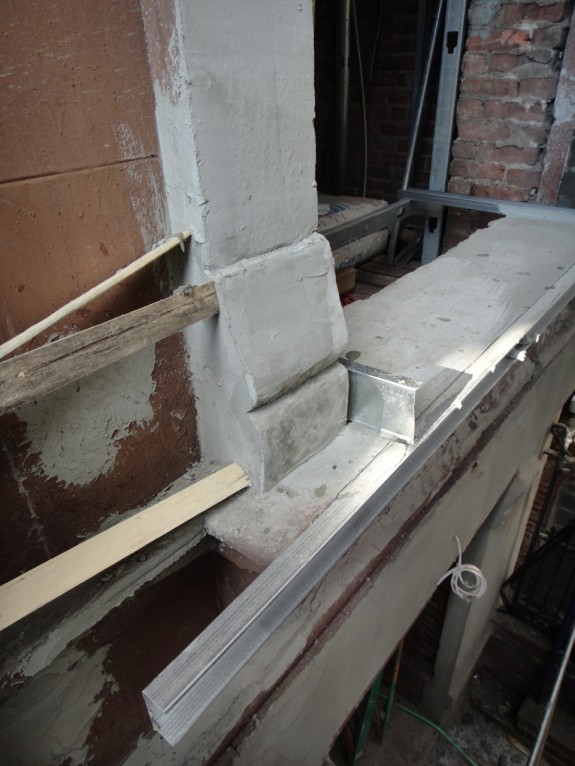 And below you see they’re restoring a detail around the door and creating a template of it to recreate the same detail on the other side of the door where it’s completely deteriorated…
And below you see they’re restoring a detail around the door and creating a template of it to recreate the same detail on the other side of the door where it’s completely deteriorated…
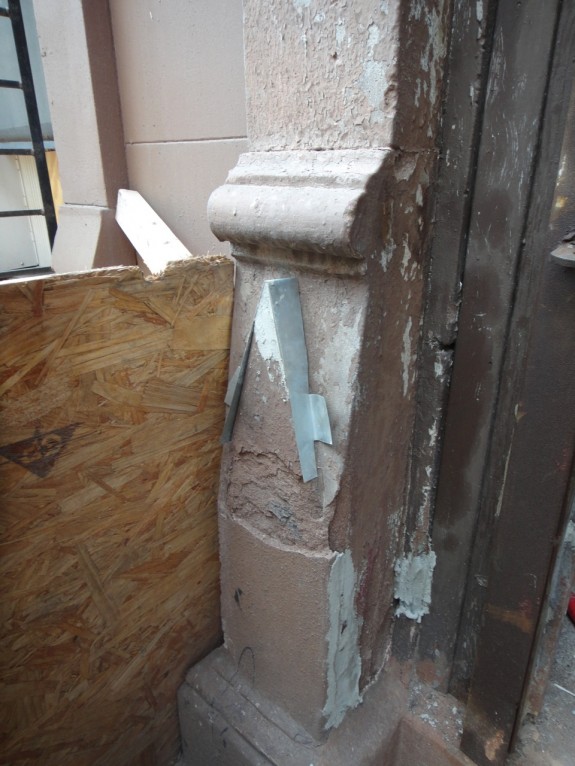 With all the netting up it’s been hard to see the progress. It will be cool when they take down the netting – we’ll finally get to see a fresh “new” façade.
With all the netting up it’s been hard to see the progress. It will be cool when they take down the netting – we’ll finally get to see a fresh “new” façade.
Dan’s also been fussing over getting the color of the façade just right. He got a piece of the original brownstone and had it color matched. But that’s tricky ’cause the original brownstone had something like mica in it that made it sparkle slightly. We’re wondering whether we can get a mica aggregate in the paint we use, but we don’t want to overdo it and make it look like its got bling embedded in it…

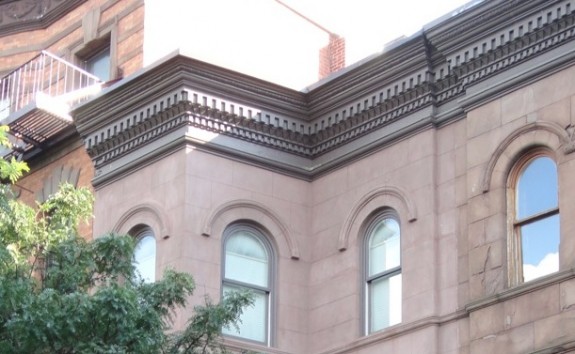 To my eye that’s a bit of a brownish gray. There are also some handsome gray cornices at the other end of our block – 102 and 104 West 123rd both have gray cornices…
To my eye that’s a bit of a brownish gray. There are also some handsome gray cornices at the other end of our block – 102 and 104 West 123rd both have gray cornices…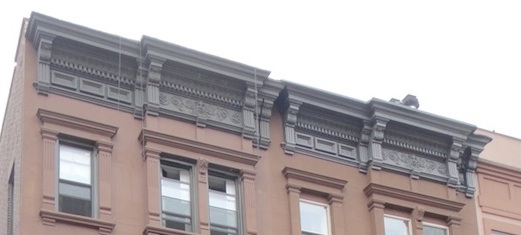 As you can see 102 (on the left) has more of a taupey gray and 104 has more of a bluish gray. Personally I don’t really like the bluish gray so much. I like a taupey or brownish gray..
As you can see 102 (on the left) has more of a taupey gray and 104 has more of a bluish gray. Personally I don’t really like the bluish gray so much. I like a taupey or brownish gray..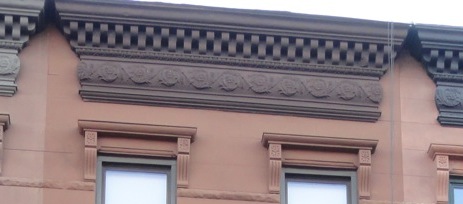 But the color we’ve decided to go with is black…
But the color we’ve decided to go with is black…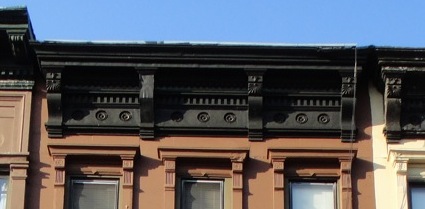 That means our building’s hat (cornice) will match it’s shoes (stoop railings and basement grill work) while the windows and basement doors will just blend in with the brownstone. The only down side is that it will be a pretty somber/formal color combination.
That means our building’s hat (cornice) will match it’s shoes (stoop railings and basement grill work) while the windows and basement doors will just blend in with the brownstone. The only down side is that it will be a pretty somber/formal color combination.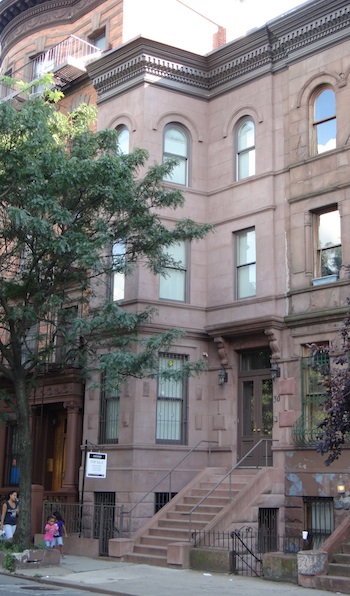 Less than a month ago
Less than a month ago 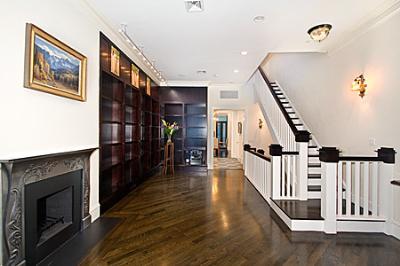
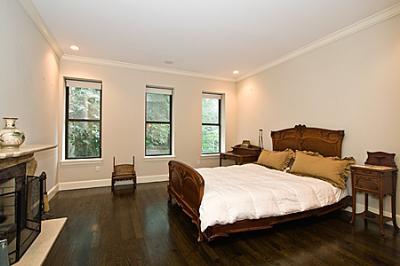
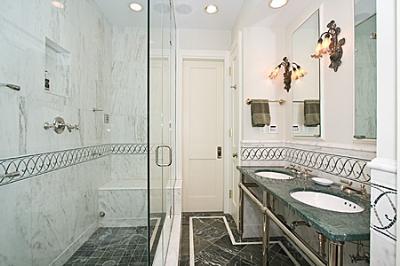 Another thing to note is that the house was single family. That means the owner was buying a degree of luxury – a 4,400 sq. ft. home. We’ll also have a quadraplex when our renovations are done, but it will only be about 3,200 sq. ft. – definitely a nice size, but not nearly as luxurious as 30 West 120. I’ve seen this in the comps before – single and two family homes often sell for substantially more than 3+ family homes.
Another thing to note is that the house was single family. That means the owner was buying a degree of luxury – a 4,400 sq. ft. home. We’ll also have a quadraplex when our renovations are done, but it will only be about 3,200 sq. ft. – definitely a nice size, but not nearly as luxurious as 30 West 120. I’ve seen this in the comps before – single and two family homes often sell for substantially more than 3+ family homes.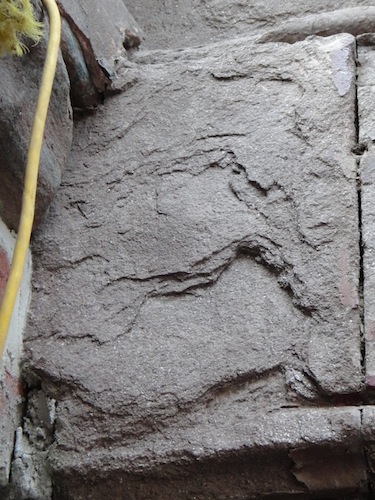 One problem was that brownstone has a distinct grain where limestone doesn’t. People in the 1880s and 1890s didn’t really like to see the grain so the stone was cut in line with the grain. That meant that as water got into the stone and froze the stone would sheer along the lines of the grain and flake off. You can see this happening on our house in the picture to the right.
One problem was that brownstone has a distinct grain where limestone doesn’t. People in the 1880s and 1890s didn’t really like to see the grain so the stone was cut in line with the grain. That meant that as water got into the stone and froze the stone would sheer along the lines of the grain and flake off. You can see this happening on our house in the picture to the right.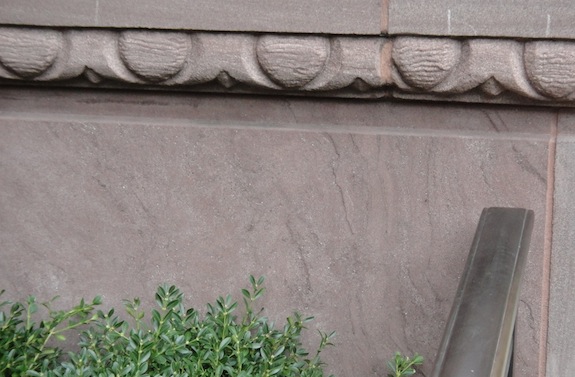 That’s with brownstone cut “correctly” – with the grain showing so it won’t flake. As I mentioned, back in the 1800s they cut it differently so the grain wouldn’t show so much, but that caused flaking. I personally think the grain is rather beautiful…
That’s with brownstone cut “correctly” – with the grain showing so it won’t flake. As I mentioned, back in the 1800s they cut it differently so the grain wouldn’t show so much, but that caused flaking. I personally think the grain is rather beautiful…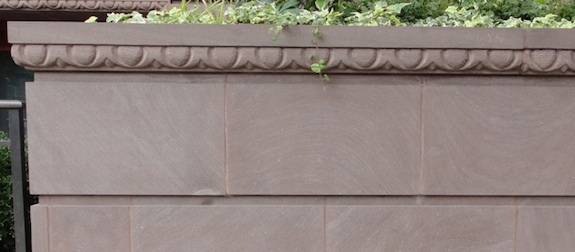 Given that brownstone used to be less expensive than limestone but now it’s far more expensive, I asked one of the guys why that was. The answer was pretty simple – there used to be 30 or 40 brownstone quarries in Connecticut, now there is just one quarry and it’s only a 3 man operation. Simply put the owners of the other quarries made more money turning their land into condo developments (land in Connecticut is expensive). In contrast there are still lots of large limestone quarries in places like Indiana and shipping costs are (relatively) lower than they were in the late 1800s.
Given that brownstone used to be less expensive than limestone but now it’s far more expensive, I asked one of the guys why that was. The answer was pretty simple – there used to be 30 or 40 brownstone quarries in Connecticut, now there is just one quarry and it’s only a 3 man operation. Simply put the owners of the other quarries made more money turning their land into condo developments (land in Connecticut is expensive). In contrast there are still lots of large limestone quarries in places like Indiana and shipping costs are (relatively) lower than they were in the late 1800s.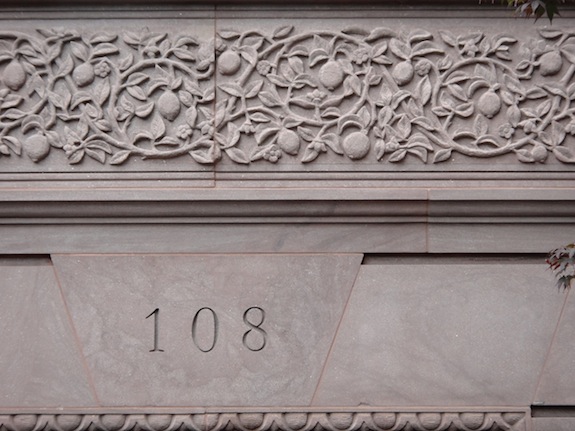 One other factor that makes brownstone expensive is that the stone yards have to assume 100% waste when working with brownstone. So they have to quarry twice the amount they need. With limestone there’s much less waste, so less material is needed to complete the job.
One other factor that makes brownstone expensive is that the stone yards have to assume 100% waste when working with brownstone. So they have to quarry twice the amount they need. With limestone there’s much less waste, so less material is needed to complete the job.